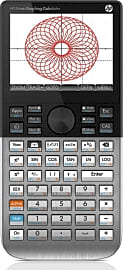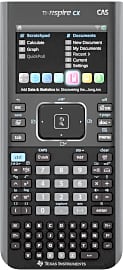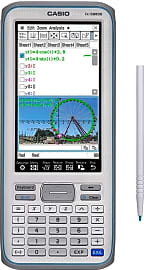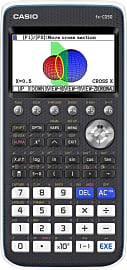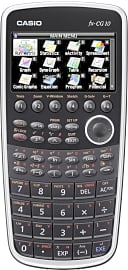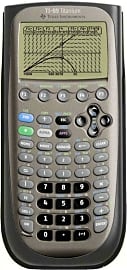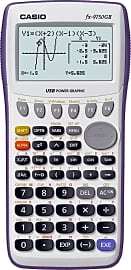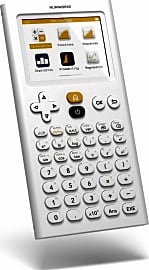The 9 Best Graphing Calculators

This wiki has been updated 42 times since it was first published in May of 2015. Not only a trademark of high school students who've moved beyond fundamental problem solving, graphing calculators are also essential for science and engineering professionals, and high-level academics. Many of today's models feature color displays, 3D capabilities, and touchscreen convenience, however basic options can still perform most operations while saving you some money. When users buy our independently chosen editorial choices, we may earn commissions to help fund the Wiki.
Editor's Notes
December 31, 2020:
Graphic calculators are an essential tool for many students and professionals. However, their functionality greatly varies, as does their price. Students who only expect to use their calculator for a couple of semesters may be best served by a reasonably budget-friendly model like the Casio Prizm fx-CG50 or Casio fx-9750GII. That being said, Texas Instruments is generally regarded as the best and most popular brand, so if you expect that you may need help using your calculator, it might be best to buy the TI 84 Plus CE. Though it is more expensive, it can perform pretty much any calculation you'll ever need to do, and every mathematics teacher should be able to instruct you on its usage for various features if you are struggling. The HP Prime 2AP18AA and Casio fx-CG500 are both touchscreen models, which some may find makes them feel a bit more intuitive and better suited to our modern sensibilities.
May 13, 2019:
Graphic calculators have been a staple in high-level mathematics for a long time. And perhaps no model is more widely used than the Texas Instruments TI 84. One of the greatest benefits of this line of graphing calculators is that most teachers are familiar with their functionality and can easily help you learn how to input equations, switch to different modes, and change the settings. That being said, the TI Nspire CX CAS is actually a more full-featured model. It has over 500 times the RAM and 20 times the ROM of the TI 84, plus the ability to store files and documents. It also features a full alphabetic keypad. Because of its added functionality, it has a much higher learning curve and even many teachers may not know how to use it, meaning it is often best reserved for students pursuing a mathematics degree. When it comes to a budget-friendly option, there are few better choices than the Casio Prizm fx-CG50, which has all the functionality the average student needs and is allowed on most major standardized exams. Those who feel no handheld device these days should be without a touchscreen will appreciate the Casio fx-CG500, which has a 4.8-inch display and even comes with a stylus. The HP Prime V2 is another option with a touchscreen. It has familiar gesture-based commands, 256 MB of memory to store custom formulas, and is impressively fast. On a side note, many people may not be familiar with the NumWorks 100, but it is the only model on our list that can actually run Python scripts.
Special Honors
Desmos Graphic Calculator App If you'll never need it for a test or anywhere else where you must have an approved model, you might be able to get by with the Desmos Graphic Calculator App. It is completely free, has powerful functionality, and, since you'll be using it on your phone or computer, you'll have a large screen to view all your computations. desmos.com
The Advent Of Graphing Calculator
Both models had a flip-open case with an alphabetic keyboard on the left side and a standard scientific keyboard layout on the right.
The first graphing calculator designed for commercial sale was the Casio fx-7000G, which was released in 1985. The advent of the graphing calculator was a significant leap forward in technology over all previous calculator models. Up until then, calculators could only process a single calculation at a time, but the Casio fx-7000G could perform a series of calculations based on formulas or functions that the user had input. In addition, it could store the results of the calculations in its internal memory. The Casio fx-7000G was also the first calculator that could be programmed by the user.
For a graphing calculator to not only plot points on a graph, but also display them for the user to see, it required a more powerful display than what previous versions offered. To combat this, Casio integrated a 96x64 dot matrix screen allowing it to plot out bar graphs, algebraic graphs, regression lines, and normal distribution curves.
When Casio first introduced the graphing calculator, they created it with a custom designed processor based on the popular Z80, which is what was used to power home desktop computers of the day. As computers of the time were relatively basic themselves, graphing calculators were capable of many of the same functions, making them essentially handheld computers.
Once Casio opened the doors to the market of graphing calculators, other companies soon followed. In 1987, HP released the HP-28 series, which was the first calculator capable of solving equations symbolically. It was available in two models: the HP-28C and the HP-28S. Both models had a flip-open case with an alphabetic keyboard on the left side and a standard scientific keyboard layout on the right. They also had a 137×32 LCD dot matrix screen.
The HP-28C was the first graphing calculator that had a Computer Algebra System (CAS) and it came with 2KB of RAM. In 1988, the HP-28S model was released, which had a stunning 32KB of RAM and a Saturn processor running at 1 MHz, giving it the same specs as desktop computers from just one year earlier.
Choosing A Graphing Calculator
Before buying a graphic calculator, it's a good idea to decide which features you need and which you don't. This will prevent you from spending more than needed on a tool that you might only use for a semester or two.
Before buying a graphic calculator, it's a good idea to decide which features you need and which you don't.
Nearly any student can benefit from a graphing calculator that has Natural Math Display. This allows it to display equations and formulas in exactly the same way as you would write them on a piece of paper; meaning fractions look like fractions and you can use full sized symbols. Having this will make reading a graphing calculator considerably easier, which is especially useful for those new to using them.
CAS makes using a graphing calculator quicker and more efficient. Instead of having to give a numerical definition to each and every variable, you can just perform algebra symbolically. This is an absolute necessity for complex calculations, which not only makes your life easier, but also allows the graphing calculator to solve equations with a higher number of unknown variables.
Only the most expensive models are available with full color screens, and some even are touchscreens. A full color screen will make navigating menus easier and graphs easier to read. Those with a class load heavily focused on mathematics should certainly consider one, but for those who are just taking the bare minimum of math and science classes, it is probably best to choose a less costly model without a color screen.
3D graphing is another feature that is only useful for particular classes. 3D graphing allows a calculator to plot multivariable functions over the x, y, and z planes, as opposed to standard graphing which only plots on the x and y planes. If you are just taking basic algebra and precalculus classes, it's more of a luxury than an essential feature, whereas those taking non-linear algebra and multivariate calculus will find it invaluable.
Two Common Questions About Graphic Calculators
One of the foremost questions parents and students have about graphing calculators is "What classes use them?" Graphing calculators are a vital tool in a number of science and math classes. This is by no means an exhaustive list, but a student can expect to use a graphing calculator in algebra classes of all levels; geometry, precalculus and calculus, trigonometry, biology, physics, chemistry, business and finance, and statistics.
Graphing calculators are a vital tool in a number of science and math classes.
Another common question is whether to purchase one with a rechargeable battery or one that uses standard alkaline batteries. While many people these days prefer rechargeable devices, buying one that requires alkaline batteries may be a better choice for those who will be using their graphing calculator for tests.
If a student accidentally forgets to charge their device before a big test, there is nothing they can do about it and will either have to take the test without their graphing calculator, or rush out to a store to buy one that takes alkaline batteries. Even if charged, their is always the risk of it dying during class or a test. Models that take alkaline batteries will always be ready to use as long as a student makes it a habit to keep a few extra batteries in their bag at all times.


